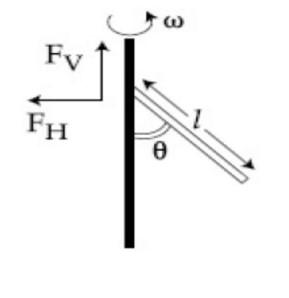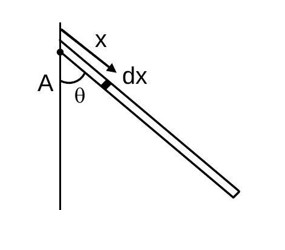Physics System of Particles and Rotational Motion
Get insights from 151 questions on Physics System of Particles and Rotational Motion, answered by students, alumni, and experts. You may also ask and answer any question you like about Physics System of Particles and Rotational Motion
Follow Ask QuestionQuestions
Discussions
Active Users
Followers
New question posted
3 months agoNew answer posted
3 months agoContributor-Level 10
By the principle of conservation of angular momentum, the total angular momentum of the system (platform + person) remains constant.
L_initial = L_final
I_initial * ω_initial = I_final * ω_final
Initial state: Person is on the rim.
I_initial = I_platform + I_person_rim = (1/2)M_platform R² + M_person R²
Final state: Person is at the center.
I_final = I_platform + I_person_center = (1/2)M_platform R² + 0
[ (1/2) (200)R² + (80)R²] * 5 rpm = [ (1/2) (200)R²] * ω_final
(100R² + 80R²) * 5 = (100R²) * ω_final
180R² * 5 = 100R² * ω_final
ω_final = (180 * 5) / 100 = 9 rpm.
New answer posted
3 months agoContributor-Level 10
The mass of the cylinder M = ρV = ρ (πR²L), where ρ is the density of the material.
We can express R² in terms of L: R² = M / (πρL).
The moment of inertia is I = M (R²/4 + L²/12).
Substitute R² into the equation for I:
I (L) = M * [ (M / (4πρL) + (L²/12) ]
To find the minimum possible I, we differentiate I with respect to L and set the derivative to zero.
dI/dL = M * [ -M/ (4πρL²) + 2L/12 ] = 0
M/ (4πρL²) = 2L/12 = L/6
M/ (πρ) = (4/6)L³ = (2/3)L³
Since R² = M/ (πρL), we have R²L = M/ (πρ).
Substitute M/ (πρ) into the differentiated equation:
R²L = (2/3)L³
New answer posted
3 months agoContributor-Level 10
. τ? about B is zero at equilibrium
T?100 - mg*50 – 2mg*25 = 0
T?100 = 100mg
T? = 1mg
Taking an Exam? Selecting a College?
Get authentic answers from experts, students and alumni that you won't find anywhere else
Sign Up on ShikshaOn Shiksha, get access to
- 66k Colleges
- 1.2k Exams
- 680k Reviews
- 1800k Answers


